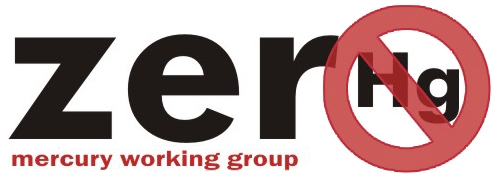Chlor-alkali industry
Elemental mercury is used as a fluid electrode in an electrolytic process (referred to as the “mercury cell” process) used for production of chlorine and sodium hydroxide (NaOH) or potassium hydroxide (KOH) from salt brine.
Alternative non-mercury processes exist since the 1980’s and are also widely used: the membrane process and the diaphragm process.
While the prevalence of the mercury-cell process is generally decreasing in many countries, it is still used widely, e.g. the mercury-cell process is used for about 50% of chlor-alkali production in Europe, less than 10% in theUSand less than 25% in India.
Mercury-cell chlor-alkali plants (even the ones that have been closed for many years) are obviously sitting on heavily contaminated sites that continue to release mercury into the surrounding environments.
Relevant legislation and NGO policy work
Globally
The Minamata Convention on Mercury, under Article 5 requires that Each Party shall not allow, by taking appropriate measures, the use of mercury or mercury compounds in the chlor-alkali production, after 2025, except where the Party has a registered exemption pursuant to Article 6.
Important work has also been done under the UNEP Global Mercury Partnershipon Reducing Mercury in the Chlor-alkali sector.
The ZMWG has been following this issue closely and has been giving respective feedback at the global mercury negotiations. See also the ZMWG fact sheet Chlor-alkali (Jan 2011)
In Europe
Mercury use in the chlor-alkali sector is banned since 11 December 2017, after long debates since 1990 ( OSPAR Decision 90/3 of 14 June).
In 2010- the Integrated Pollution Prevention and Control (IPPC) Directive (96/61/EC) was replaced by the Industrial Emissions Directive (IED),which has entered into force on 6 January 2011 and has to be transposed into national legislation by Member States by 7 January 2013. Although the principle is the same as for IPPC, the role of the Best Available Technique (BAT) Reference Documents (BREFs) has been strengthened, providing more opportunities to the legislator to question why mercury process may still be permitted in the sector. The latest chlor-alkali BREF document was published at EU level and the BAT conclusions, declaring that mercury use in the chlorine sector is not BAT, adopted in December 2013 (after long earlier discussions and different interpretations). According to the IED the BAT conclusions become legally binding and need to be considered by the local authorities 4 years after adoption. As a result on 11 December 2017 the ban of the mercury use in the chlorine sector came into effect.
In addition, the revised Regulation (EU) 2017/852 on mercury also bans the chlor-alkali production which mercury is used as an electrode from 11 December 2017; furthermore the regulation included that the export of metallic mercury is banned after 15 March 2011, and mercury from decommissioned chlor-alkali plants is considered waste and shall be safely disposed of after being solidified.
The European Environmental Bureau through its Zero Mercury Campaign focused on the mercury use in the chlor-alkali sector and more specifically organised on the ground campaigns in five EU countries in view of creating momentum in each country towards obtaining a national commitment for the early conversion of existing mercury-cell chlor-alkali plants, while ensuring that decommissioned mercury from these plants will be safely stored and not re-enter the market; and to raising awareness on mercury issues in general.
The campaign took place from 2006 - 2010, in Italy, Spain, the Czech republic, Germany, and France from NGOs, members of the EEB/ZMWG - Legambiente, Ecologistas en Acción, Arnika, DNR, and France Nature Environnement (FNE), respectively. A relevant studywas also commissioned, and an additional report were published by the EEB in 2006, followed by another study in 2008.

